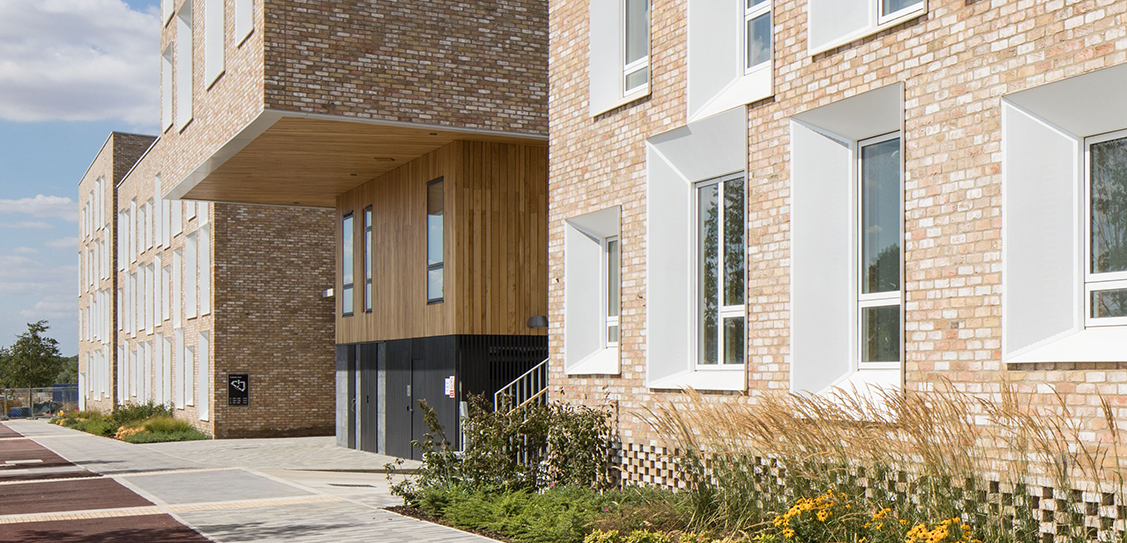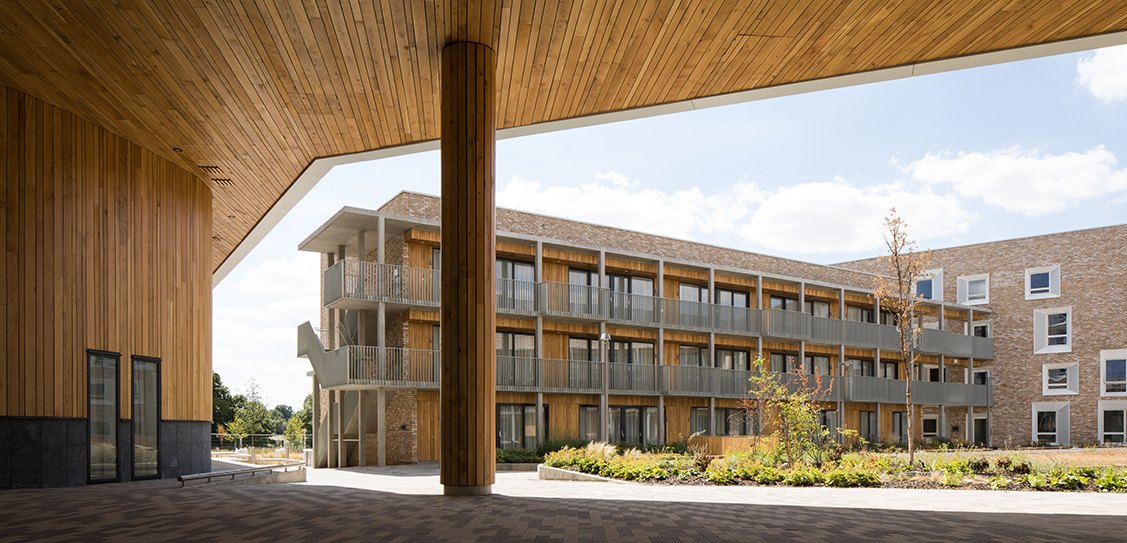The North West Cambridge Development (NWCD) have transformed a 150 hectare site of the University of Cambridge’s farmland into a community with residential buildings, academic facilities, public amenities and open green space.
Over the centuries Cambridge has become a city contextualised through architecturally layered inventions, resulting in a unique composition of urban space, architecture and landscape. Mecanoo’s design adds a new layer to this, building upon the rich traditions and collegiate character of Cambridge.
To create a strong sense of community the relation between the public and private realm was carefully reconsidered. The Cambridge characteristic of varying enclosed and open spaces, alternating between formal and informal groupings of buildings, is a departure point for the design that activates the courtyards, creating different connections between the dwellings and the communal area.
The two internal courtyards with lawn, flower fields, raised decks, planters, fruit trees and urban furniture are sheltered by galleries forming covered external community spaces. Apartments are grouped around spacious central halls flooded with daylight, all leading to the courtyards.
The central building is the visual and communal focal point of the development, acting as a spine to the site. Covered exterior space in the heart of the development forms a modern interpretation of the Cambridge colonnades and arcades. Locating the community facilities along the public route through the block facilitates the development of a communal identity, whilst reaffirming that sense of being part of a much larger academic collective.
The design complies with Code For sustainable Homes Level 5; this was achieved by creating compact, efficient volumes with high performance Fabric Energy Efficiency, good internal daylight performance, bespoke assisted natural ventilation for night-time cooling, large array of PV cells on the roofs, district heating, a site wide rainwater attenuation strategy including a grey water system and collective gardens that increase the biodiversity.



